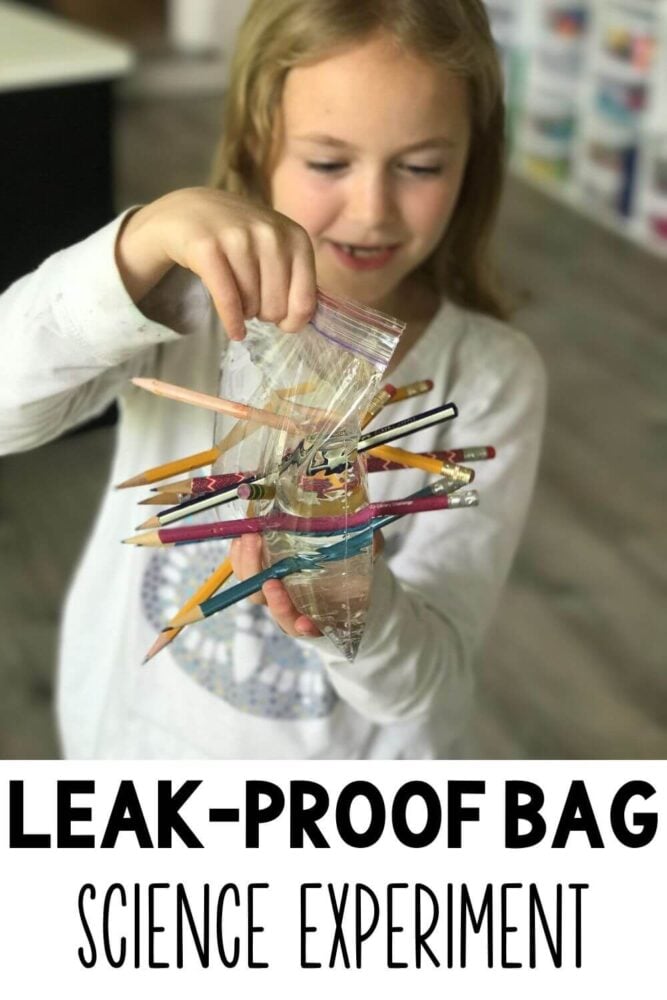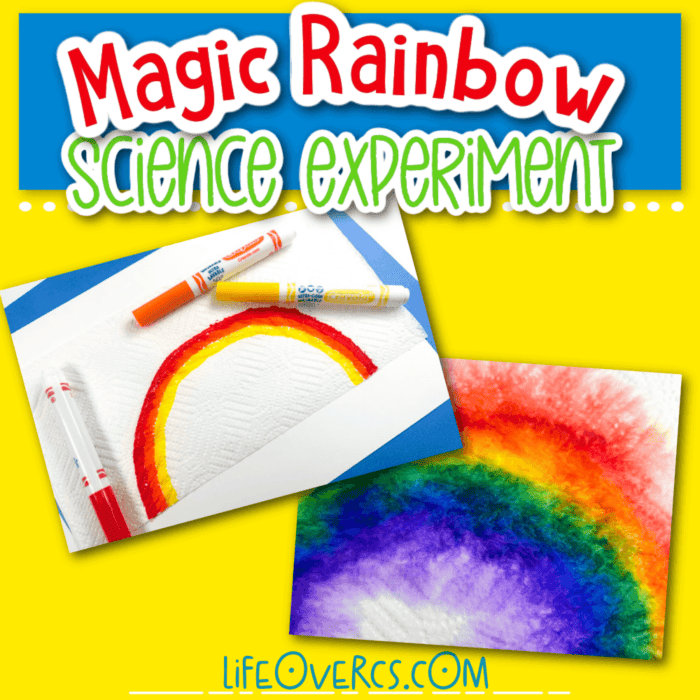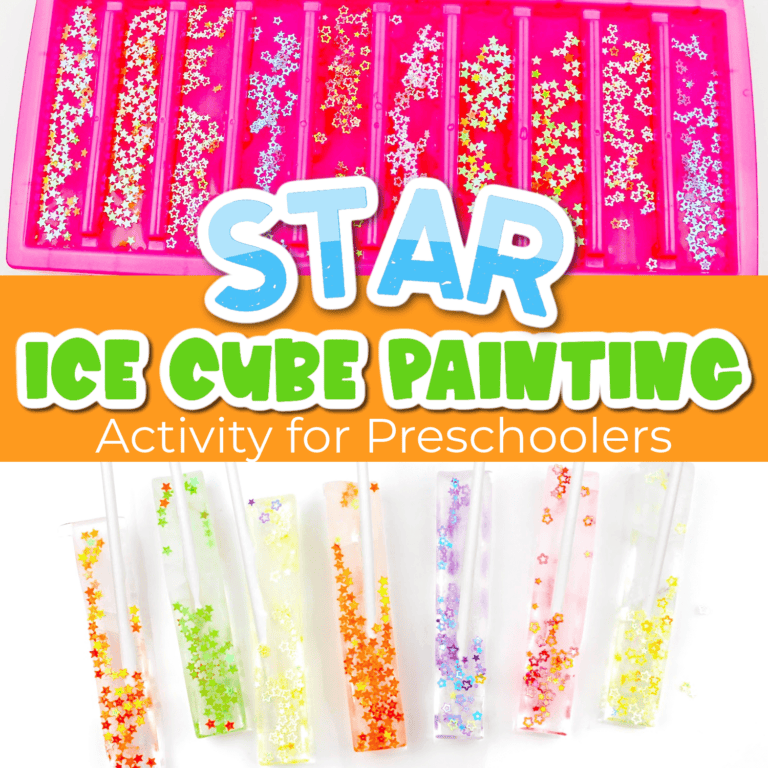No Leak Magic Bag Science Experiment for Kids
I LOVE science experiments! I honestly don’t know who gets more excited when it is time to do an experiment, me or my preschoolers. It’s so fun to watch the curiosity and excitement on their faces as we work our way through an experiment. The only thing I don’t totally love about science experiments…. The MESS! That’s one of the many reasons why I am super excited to share this No Leak Magic Bag Science Experiment for Kids with you today. No leak = No mess! It doesn’t get much better than that!

Recommended Grade Level:
Not only is this no leak magic bag experiment mess free, but it is also super simple to do. You just need three household items and you have a fun science experiment for kids!
Why Are Science Experiments Important For Kids?
There are so many benefits to doing science experiments with kids!
- Science experiments encourage critical thinking and promote curiosity.
- Experiments can be a great way to motivate reluctant readers. Pair a cool experiment with a science book for kids that helps to explain what happened in the experiment.
- Mixing, pouring, and manipulating science materials is a good way to work on strengthening fine motor skills.
- Experiments are a wonderful way to bring science concepts to life for visual learners.
- Working through science experiments is an awesome way to develop vocabulary and work on listening comprehension skills.
What’s The Science Behind The No Leak Magic Bag Science Experiment?
Kids love this super simple science experiment!
Some kids may enjoy the explanation that this experiment is just magic. Others may push for a more scientific explanation.
The science behind this experiment is all in the plastic bag.
Plastic bags are made of a polymer, which is a flexible and long chain of molecules.
Once you poke the pencils through the bag the molecules spread apart and then form a temporary seal around the pencils.

How To Make A No Leak Magic Bag Science Experiment:
Instructions:
Even though this is a no leak bag experiment, you still may want to do the experiment over a sink, large bowl, or shallow dish because once you remove the pencils at the end of the experiment the water will leak out the holes!
Fill your gallon size storage bag about half way full of water. Close the bag.
Poke a pencil in one side of the bag, through the water, and out the other side.
Continue with as many pencils as you would like!
See the No Leak Bag Experiment in Action:
Other Ideas For This Experiment:
- Dye your water with food coloring before you poke holes through the bag.
- Take pictures of your experiment and then help your child write about it when you are finished. This is a great way to work on writing skills and science content at the same time!
- Before you do the experiment, talk about the scientific method. Make a prediction about what will happen and then revisit the prediction at the end of the experiment and see if it was correct or not.
Check Out These Other Cool Science Experiments For Kids:
- Teach kids colors with a fun skittles rainbow or walking water rainbow experiment!
- Explore chemical reactions with this awesome apple volcano!
- Planning on doing any planting this Spring? Experiment with seeds and show kids what roots look like with this Seeds In A Bag experiment.
Do you love this activity?
Pin it for later!

More Science Experiments You’ll Love:
- Valentine’s Day Magic Milk Experiment
- Skittles Color Rainbow Experiment
- Baking Soda and Vinegar Easter Egg Experiment
Looking For More Science Fun?
How About Even More Awesome Science Ideas?
- Color Changing Flowers Experiment
- Winter Snow Volcano Science Experiment
- Apple Volcano Science Experiment
- Rainbow Soda and Mentos Experiment
- Fizzing Ice Experiment
Search All Activities
Looking for more? Find exactly what you need here:












